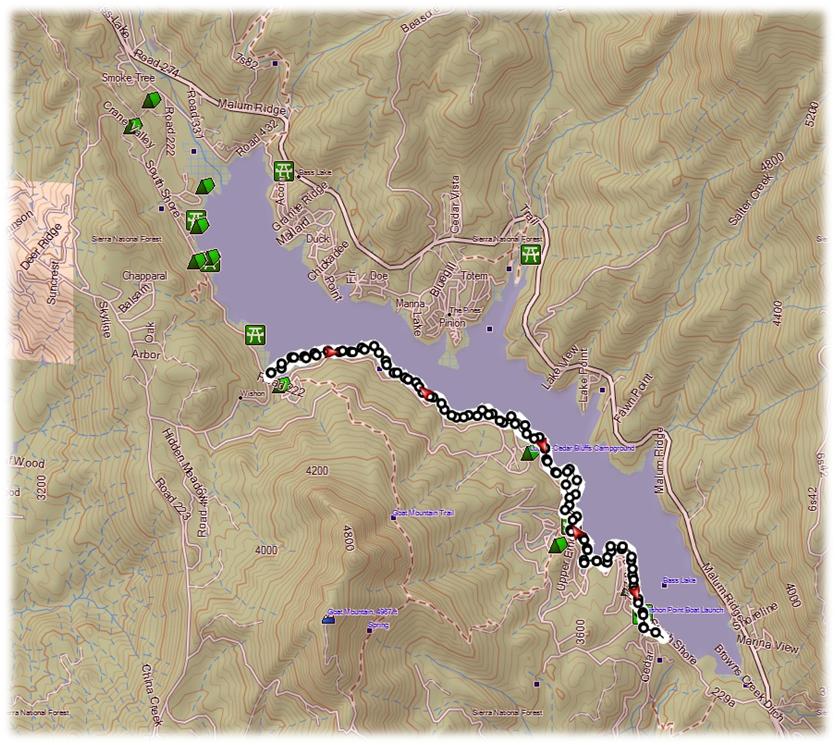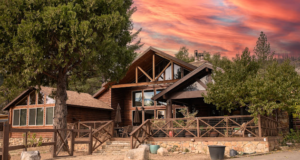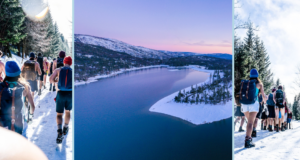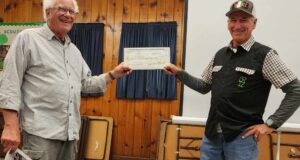We didn’t need to travel very far to get some exercise, let Sally stretch her legs and see some waterfowl. Bass Lake was only a short drive and we were treated to beautiful morning reflections in the lake that was fringed with ice.
Where: Sierra National Forest, Pacific Gas & Electric
Distance: 7.6 Miles
Difficulty: Easy
Elevation Range: 3,099′ – 3,389′
Date: January 3, 2015
Maps: Ahwahnee Topographic Quad
We drove out Rd. 222, parking across the street from The Forks Resort’s restaurant in the dirt parking lot. Just in case I got you thinking about having one of their hamburgers, they are closed for the season. I’ve sure been thinking of those hamburgers though.
The lake was like glass when we started our hike from The Forks to the dam.
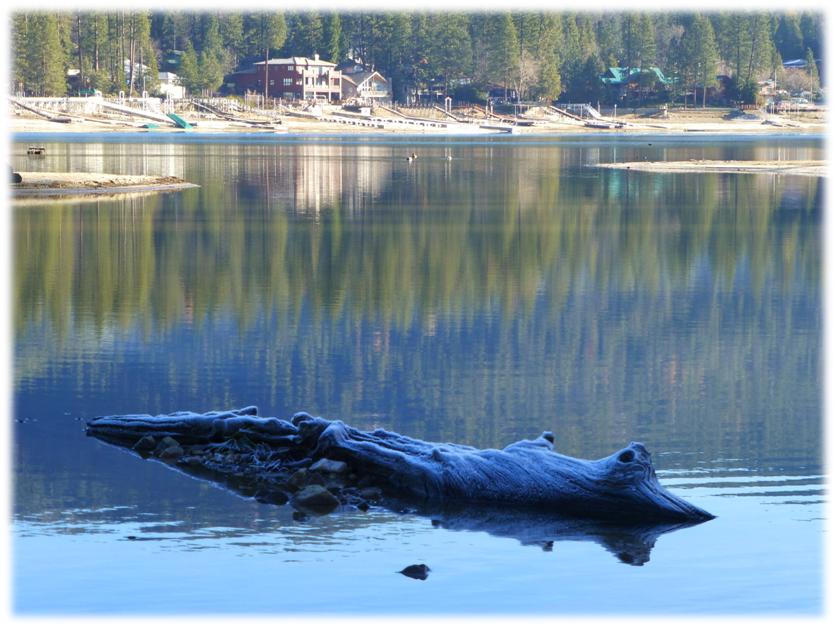
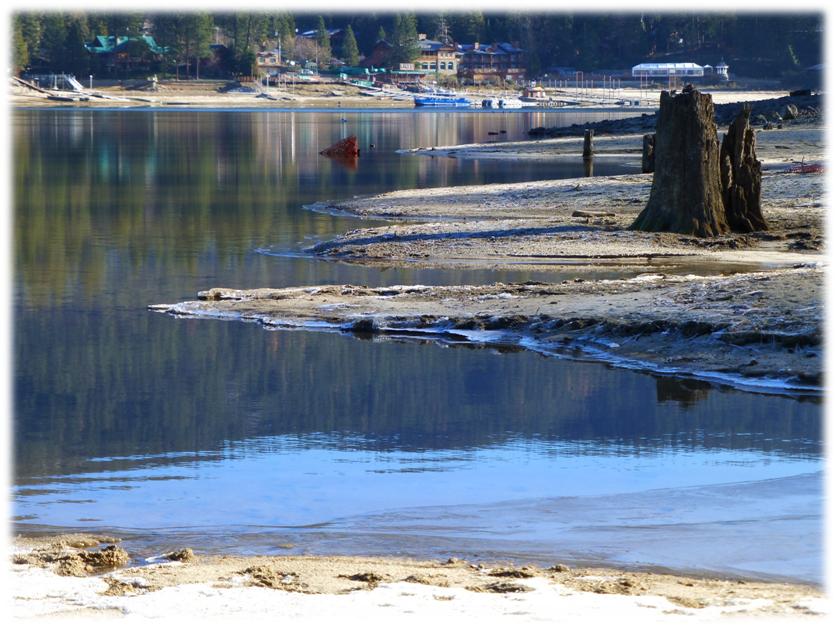
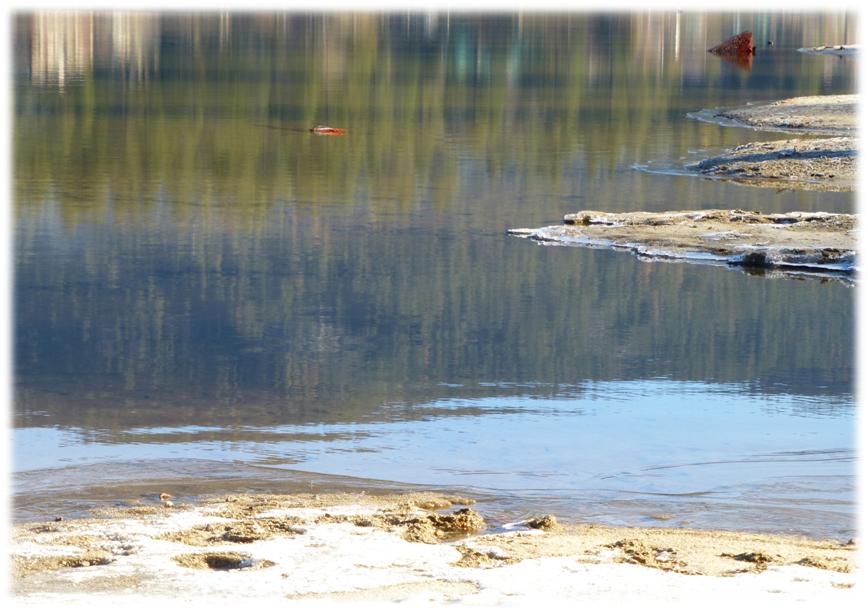
Bass Lake, also known Crane Valley Reservoir, is about 4 miles long and about one half mile wide. The lake is owned by PG&E and most of the lane surrounding it is part of the Sierra National Forest.
Long before the first dam was built in 1901, this area was a lush meadow surrounded by Pine trees, and the home of Native American Indians that included the Chukchansi and Mono Indians. In Marcia Penner Freedman’s book “Willow Creek History”, she said that Nellie Williams and Nokomis Turner, a Mono Indian brother and sister whose ancestors lived in Crane Valley, said that “the Mono were attracted to the area because of the abundant food sources, particularly the acorns, a staple in their diet.”
A detachment of the Mariposa Battalion came across the valley in 1851 shortly after their discovery of Yosemite Valley. The story goes that they were watching flocks of what they thought were Sandhill Cranes, so they decided to name the large meadow area Crane Valley. The large grey-blue birds were actually Great Blue Herons that still claim this area as their home today.
Robert Eccelston described what Crane Valley looked like to this Mariposa Battalion in his diary The Mariposa Indian War 1850-1851 “. . .abundant in grasses and wild game, nearly covered with water, boggy, and with a deep stream running through it lengthwise.”
The stream was to become known as Willow Creek much later. The Mariposa Battalion claimed Crane Valley for itself. Between the California Gold Rush and the news of open land, the White Man started coming to the area and settling. It was a violent time for our Native American Indians. Many were killed, many died of sickness that the White Man brought with them, they were separated from their ancestral lands and they were forced to adapt to the White Man.
In 1895, a plan was devised to use the waters of Willow Creek to generate hydroelectric power for residents of the great San Joaquin Valley. The San Joaquin Electric Company was formed and the first earthen dam was built in Crane Valley in 1901. In 1902 the San Joaquin Light & Power Corporation was formed to purchase the electric company and later the electric operations of the rival gas company. The dam was enlarged in 1905 and the present Dam was built in 1910. A seismic retrofit of the dam was completed in 2013.
The lake was called Crane Valley Reservoir for many years but the name was eventually changed when a small Bass Lake lumber operation polluted the lake, killing all the fish that were in it. The lumber company was ordered by the government to replace all the fish that were lost. The chosen fish was Bass, and that is how the lake got its new name of Bass Lake.
Today, Bass Lake is owned and operated by Pacific Gas and Electric Company and the waters of the lake are still used today to generate electricity, irrigate farmland in the Central Valley and for numerous recreational activities.Most of the land around the lake is part of the Sierra National Forest. The U.S. Forest Service designated the lake an official Recreation Area and has developed campgrounds and picnic areas on the south shore of the lake.
Ice edged the lake as we began our walk along the water, but it didn’t slow Sally down from wading in the water.
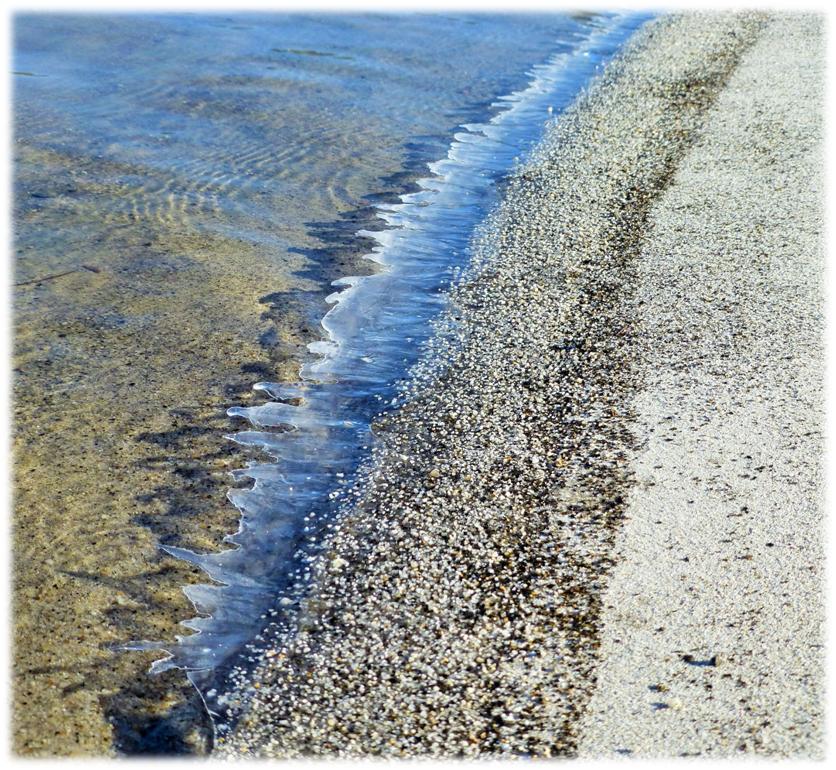
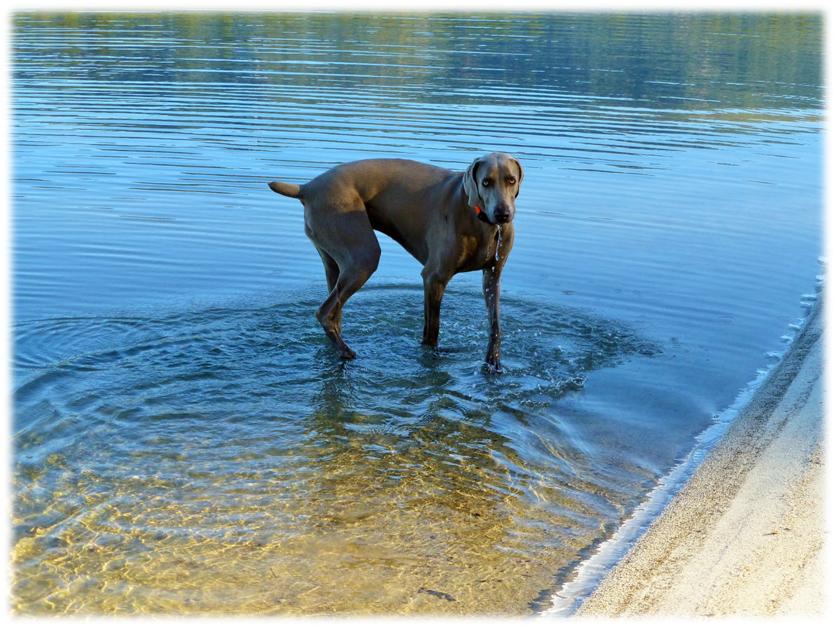
I looked toward the north side of the lake where I could easily see where the Courtney Fire burned last September.
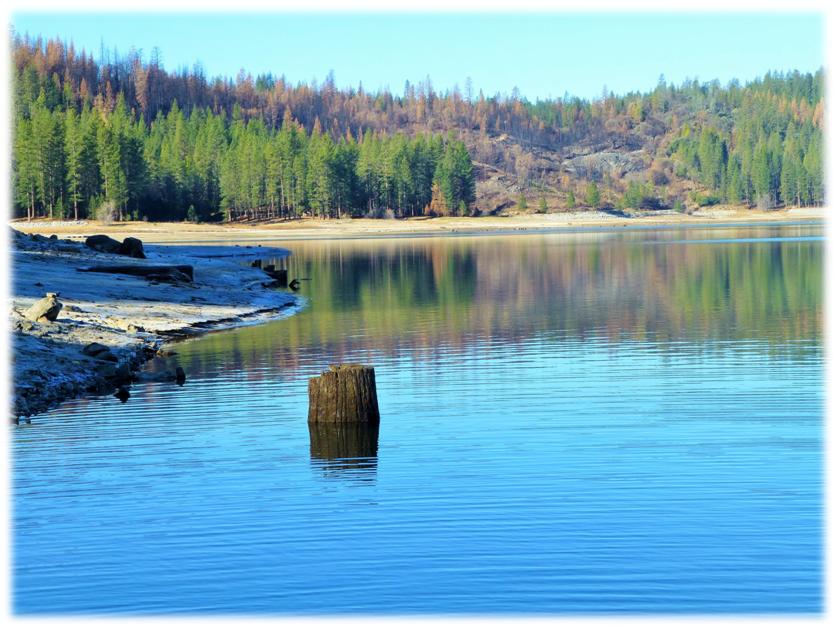
I took a closer look at the ice that decorated the edge of the lake. There were so many different patterns, some with crystalline blocks and some with snowflake-like crystals. It looked like an alien world to me.
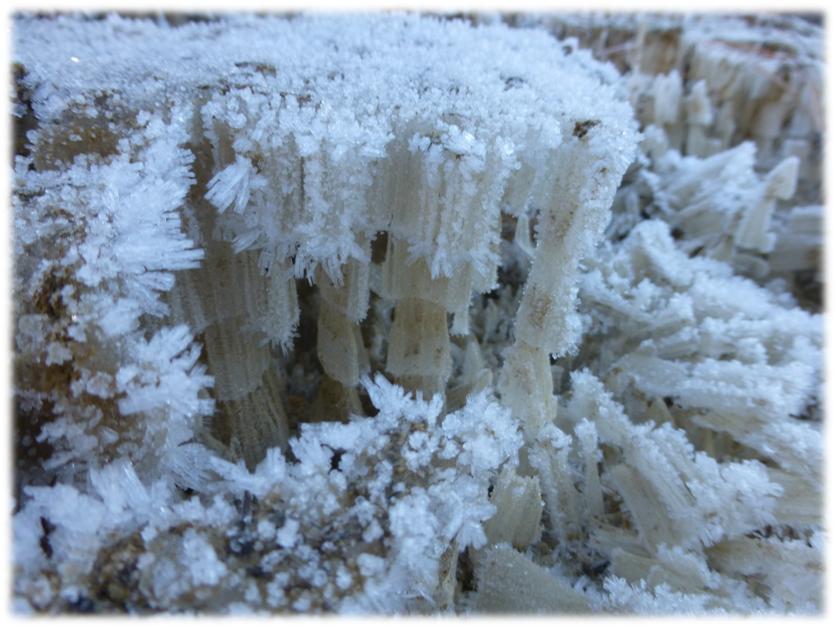
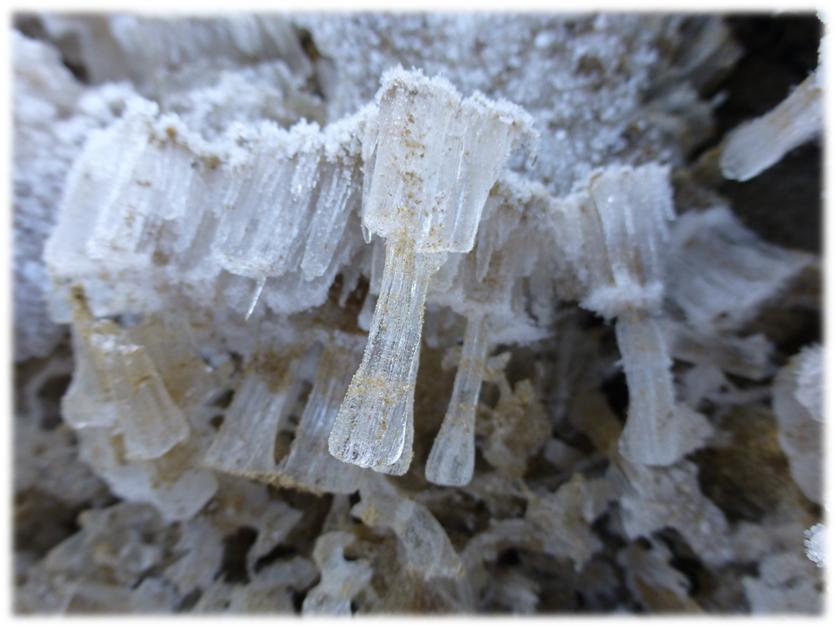
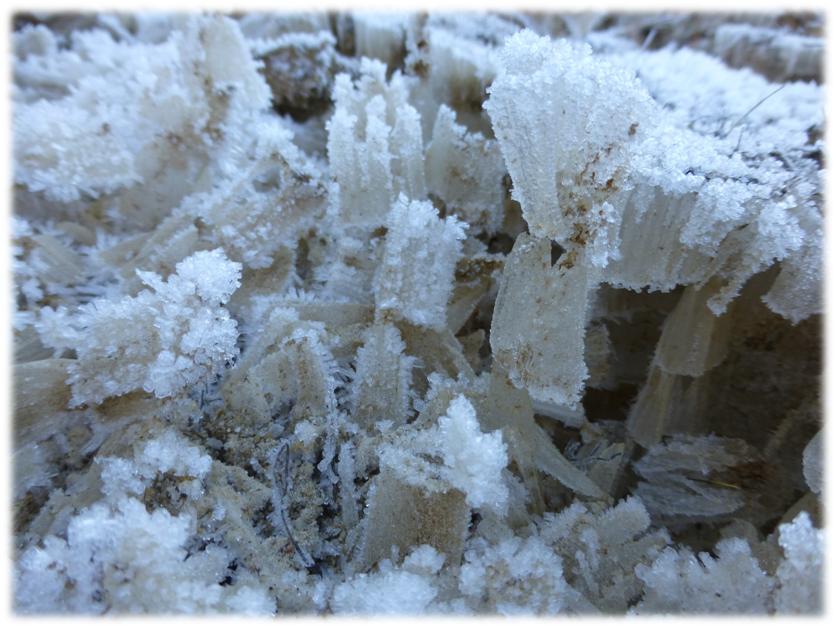
We passed by an old stump with gnarly knots on it and a light coating of frost. I loved the way that the morning light played with the gnarls.
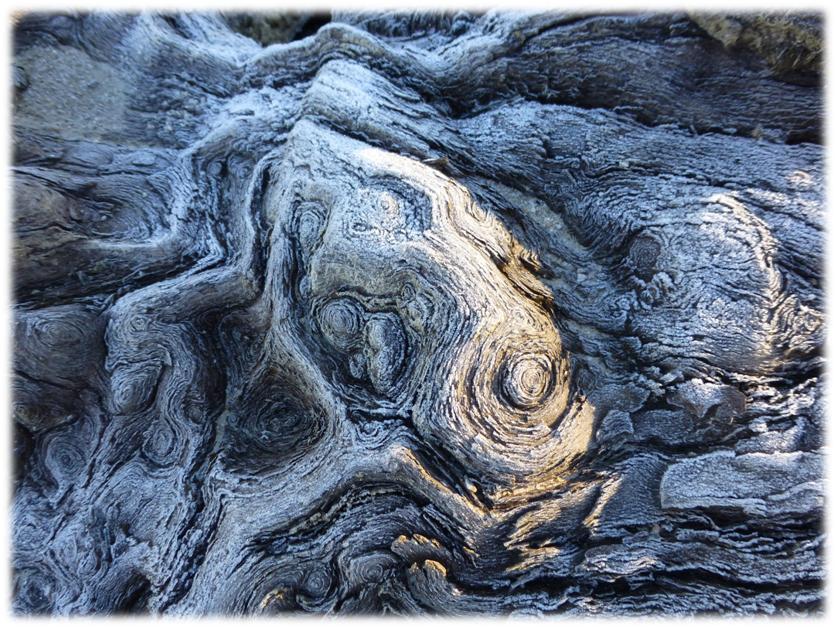
There were lots and lots of ducks. Sally thought the ducks were very fun but these ducks were pretty wise because they would stay just far enough out of Sally’s travels.
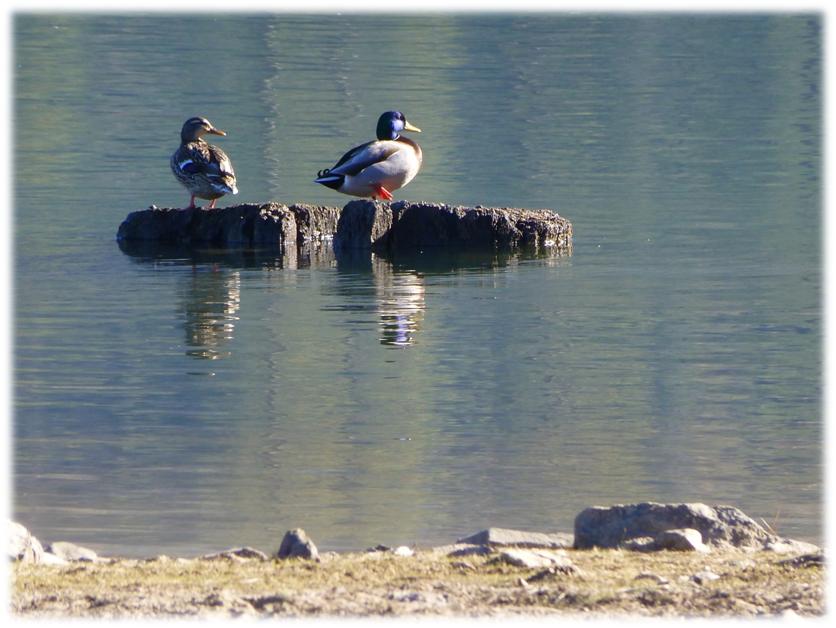
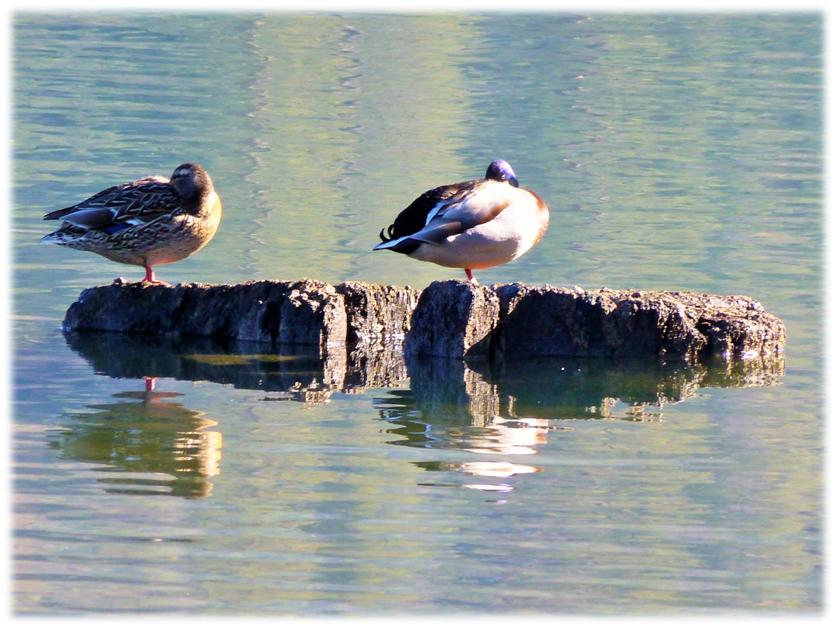
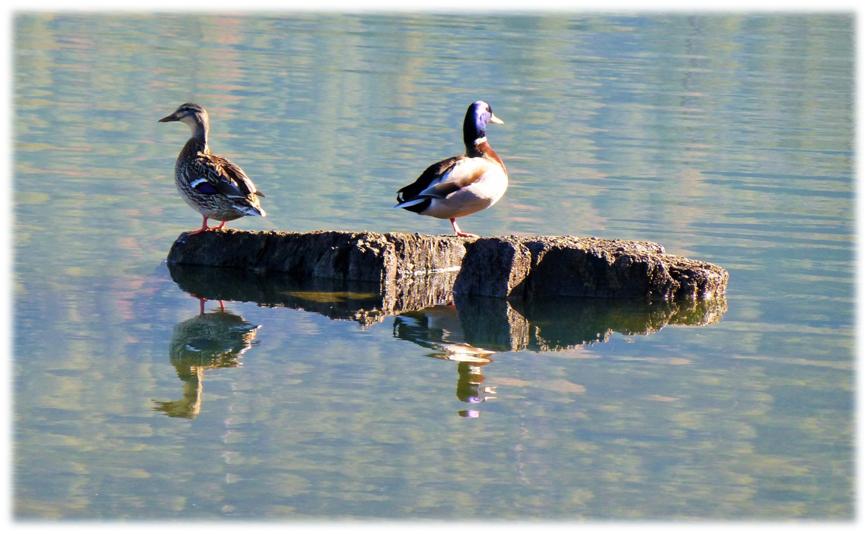
We ate our lunch on the dam, taking in that view of the lake. We could also watch the fishermen doing their thing although we never saw anyone reel anything in.
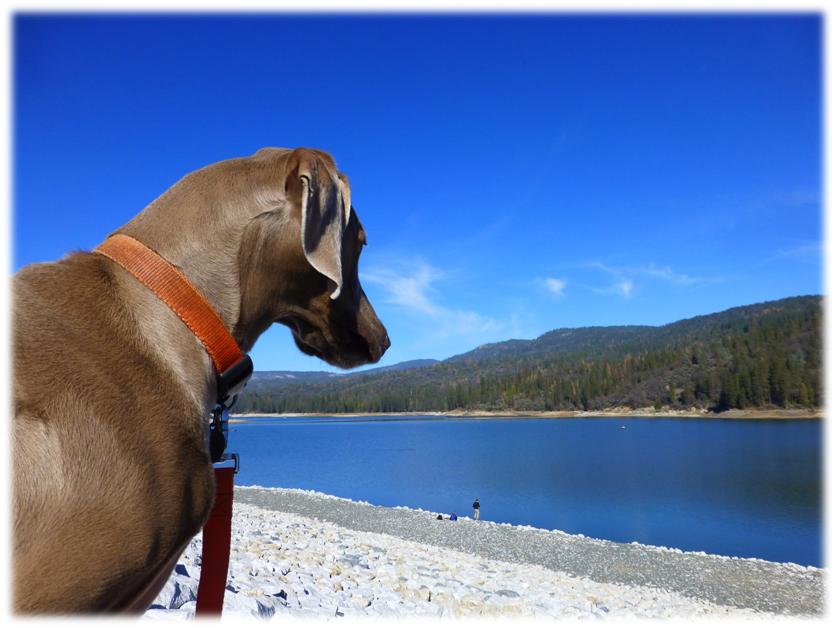
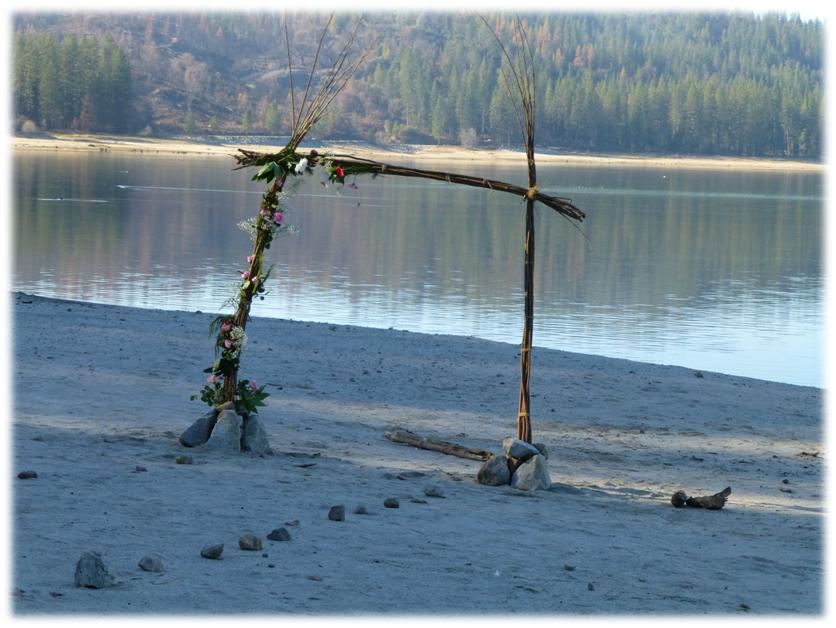
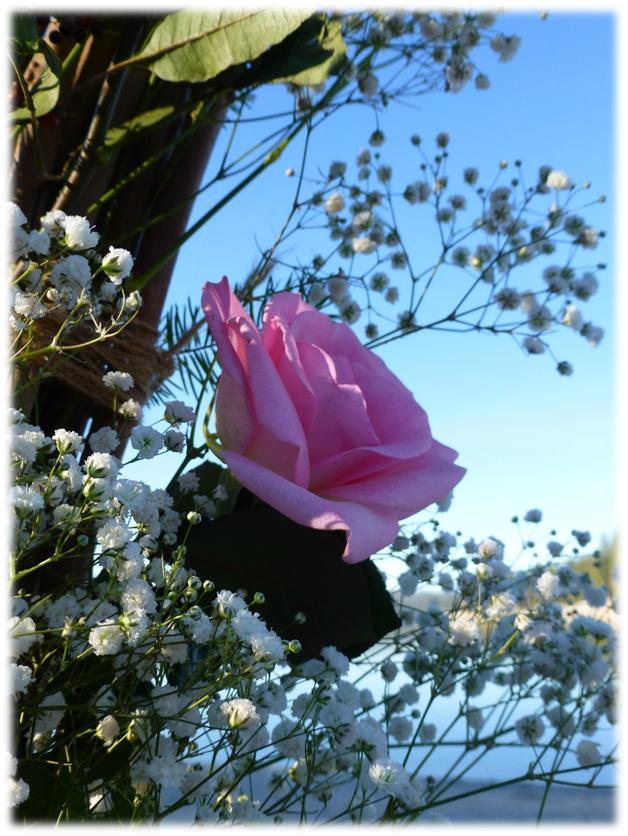
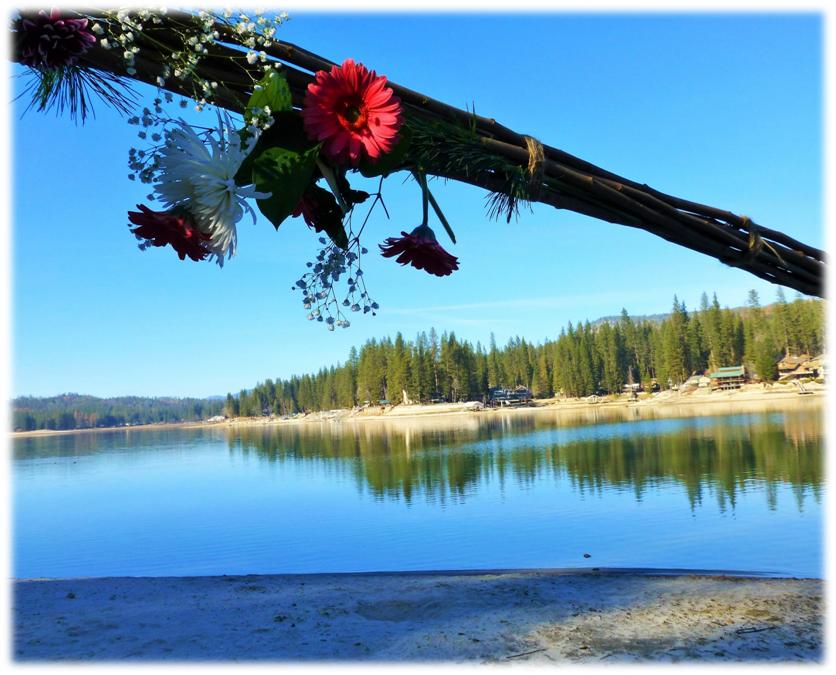
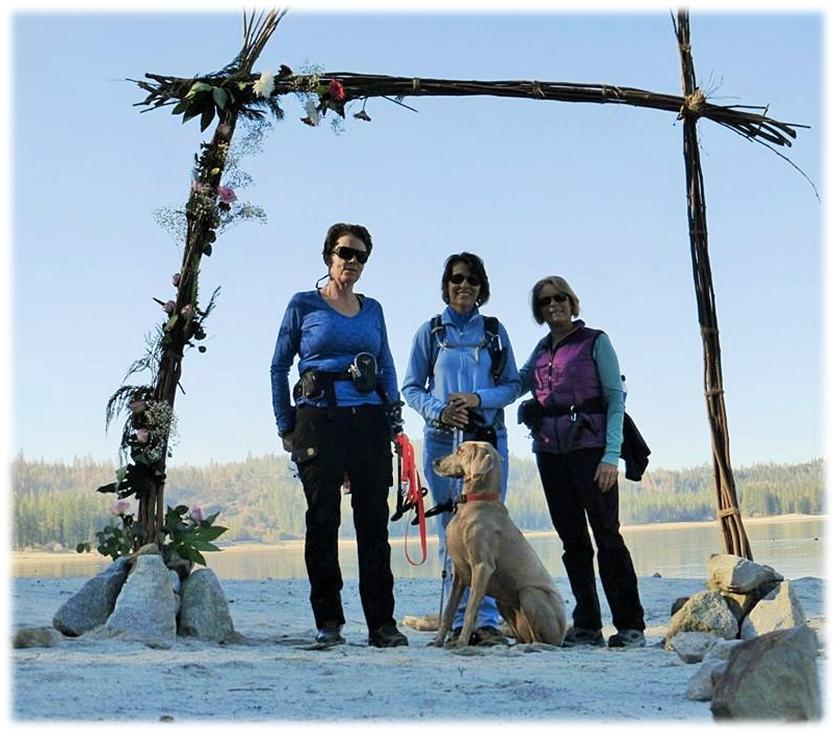
We also spotted one of the Grey Herons that resulted in the lake’s early name of Crane Valley Reservoir, what the Mariposa Battalion originally thought were Cranes.
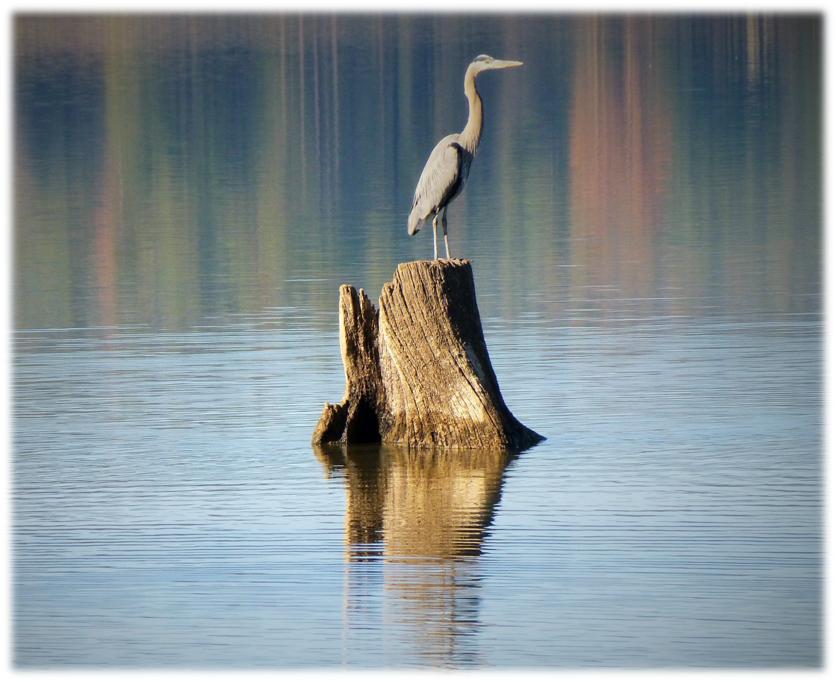
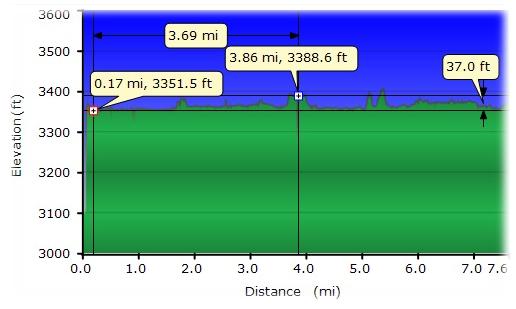
Sources:
-Eccelston, Robert. “The Mariposa Indian War: 1850-1,” Diaries of Robert Eccelstron: The California Gold Rush, Yosemite and the High Sierra. Frampton C. Gregory, ed. Salt Lake City: University of Utah Press, 1957.
-Freedman, Marcia Penner. “Willow Creek History: Tales of Cow Camps, Shake Makers & Basket Weavers.” The History Press, Charleston, South Carolina, 2013.
http://www.theforksresort.com/
http://www.fs.usda.gov/wps/portal/fsinternet/
http://www.recreation.gov/camping/bass-lake-recreation-area/r/campgroundDetails.do?contractCode=NRSO&parkId=70375
http://www.sierranevadageotourism.org/content/bass-lake-recreation-area/sieA135FABBD31AAB5FD
http://en.wikipedia.org/wiki/Bass_Lake_(Madera_County,_California)
http://basslakeca.com/dam.html
http://www.ohranger.com/sierra-natl-forest/poi/bass-lake

